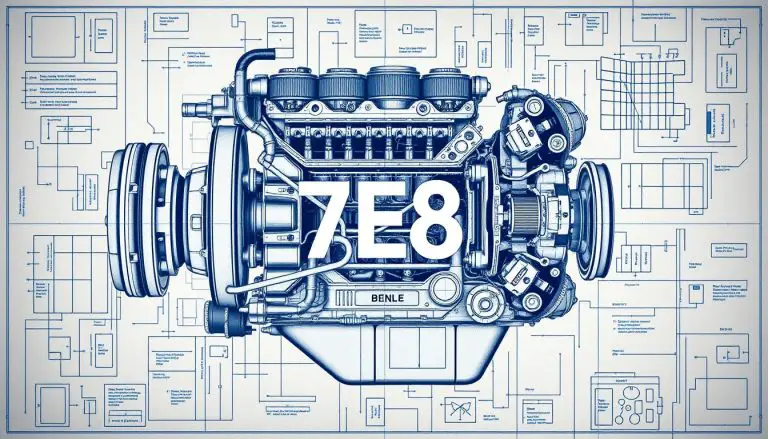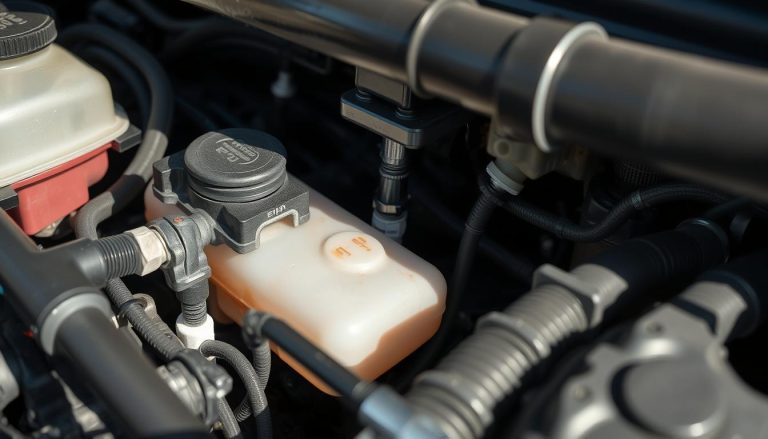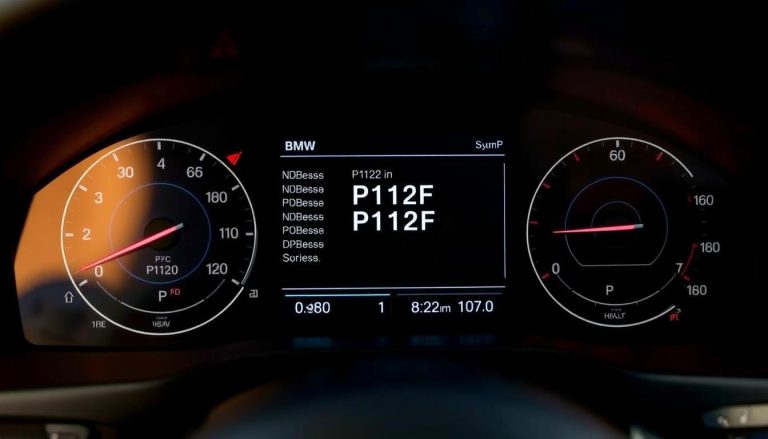When your car’s check engine light pops on, one specific code that might appear is the P0645 code, which points to an issue with the A/C clutch relay control circuit. But what does this mean for you and your vehicle?
Understanding this code not only helps keep your car running smoothly but also ensures you’re driving in comfort—especially during those sweltering summer months. Get ready to dive deep into the world of P0645, where we’ll uncover its causes, symptoms, diagnosis steps, and effective fixes.
What does the P0645 code mean?
The P0645 code signifies an issue with the A/C clutch relay control circuit. This code is generated when the engine control module (ECM) detects a malfunction in how the electrical signals are communicated to the air conditioning system.
In simpler terms, it indicates that there’s a disruption affecting your vehicle’s ability to engage or disengage the A/C compressor effectively. The relay acts as a switch, controlling power flow to this crucial component.
When this circuit malfunctions, it can lead to insufficient cooling performance from your air conditioning system. As temperatures rise outside, you’ll likely notice discomfort inside your vehicle if this isn’t addressed promptly. Understanding what P0645 entails is essential for diagnosing and resolving related issues efficiently.
What parts can be affected by P0645 code ?
The P0645 code primarily impacts the A/C clutch relay control circuit. This component is crucial for regulating the operation of your vehicle’s air conditioning system.
A malfunctioning A/C clutch relay can lead to a host of issues, including poor cooling performance and increased cabin temperatures. When this part fails, it may not send the necessary signals to engage or disengage the A/C compressor efficiently.
Additionally, wiring related to the relay could be affected. Damaged wires or corroded connectors might disrupt communication within the circuit.
In some cases, other electronic components such as sensors and modules linked to climate control systems can also experience complications due to miscommunication from a faulty relay. Addressing these parts promptly ensures optimal functionality of your vehicle’s A/C system.
What are the possible causes of a P0645 code?
The P0645 code can arise from several underlying issues :
- Faulty A/C clutch relay
- Faulty A/C Compressor
- Faulty PCM
- Faulty or damaged wiring
- Defective A/C clutch
- Broken control module ground strap
- Blown fuse or fuse-able link
- Corroded or damaged connector
- Defective control module
- Low or over serviced A/C system
What are the common symptoms of a P0645 code?
When a vehicle triggers the P0645 code, several symptoms may arise, signaling an issue with the A/C clutch relay control circuit. One of the first signs is a malfunctioning air conditioning system. You might notice that your A/C isn’t blowing cold air as it should.
Another common symptom includes erratic or intermittent operation of the A/C compressor. This can lead to unpredictable cooling performance, making drives uncomfortable during hot weather.
You may also experience warning lights on your dashboard, such as the check engine light. This alert indicates that something requires immediate attention in your vehicle’s systems.
If you hear unusual clicking or buzzing sounds coming from under the hood when attempting to engage the A/C, this could indicate problems related to electrical components tied to this code. Addressing these symptoms early can help avoid more extensive repairs down the line.
What are the diagnostic steps for a P0645 code?
Diagnosing a P0645 code requires a systematic approach to pinpoint the issue. Start with an OBD-II scanner. This tool will read the trouble codes stored in your vehicle’s computer.
Next, visually inspect wiring and connectors related to the A/C clutch relay circuit. Look for signs of wear, corrosion, or loose connections that could disrupt electrical flow.
After addressing physical inspections, you might want to test the A/C clutch relay itself. Use a multimeter to check for continuity. If it’s faulty, replacing it may resolve your P0645 issue.
Follow up by checking any associated fuses and relays in the system. Sometimes these components can fail simultaneously or cause intermittent problems.
Clear any diagnostic trouble codes from your vehicle’s memory before taking it for a test drive. Monitor if the P0645 returns after repairs are made; this confirms whether you’ve solved the problem effectively.
How serious Is the P0645 Code? Can I continue driving with the P0645 code?
The seriousness of the P0645 code largely depends on how it affects your vehicle’s performance. This code indicates a problem with the A/C clutch relay control circuit, which can disrupt air conditioning functionality.
While you might be tempted to ignore it for a while, doing so could lead to more significant issues down the line. If your A/C system fails completely, driving in hot weather can become uncomfortable and even unsafe.
You may continue driving if other systems seem unaffected and there are no warning lights indicating immediate danger. However, keep an eye out for any changes in engine performance or unusual noises. Regular monitoring is essential until you get professional help.
Addressing this issue sooner rather than later ensures that you’re not left stranded without air conditioning when you need it most.
What are the repair solutions for a P0645 – A/C Clutch Relay Control Circuit ?
When addressing the P0645 code, start by inspecting the A/C clutch relay. A faulty relay can disrupt power to the A/C system, so replacing it is often a straightforward fix.
Next, examine wiring and connectors linked to the control circuit. Look for frayed wires or loose connections that could be causing intermittent issues. Repairing or replacing damaged components can restore function.
In some cases, reprogramming or updating the vehicle’s engine control module (ECM) may be necessary. This step ensures that your car’s software aligns with current operating conditions.
If these steps don’t resolve the issue, professional diagnostic testing might uncover deeper electrical problems within the A/C system itself. Getting expert help can save time and prevent further complications down the line.
What other codes may be related to P0645?
When diagnosing a P0645 code, several related trouble codes may surface. These codes often indicate issues within the A/C system or its components.
Codes like P0638 and P0639 relate specifically to throttle actuator control. They might signal that electrical problems are influencing multiple systems in your vehicle.
You might also encounter HVAC-related codes such as B1412 or B1413, which can point to faults in the air conditioning module itself. If these appear alongside P0645, further investigation is crucial.
Other generic OBD-II codes could include those linked to voltage irregularities, like P0562 or P0563. These suggest potential power supply issues affecting various circuits within the car.
Understanding these connections aids in pinpointing root causes effectively. Addressing all related trouble codes ensures a comprehensive approach to repairs and maintains optimal vehicle performance.
How much does it cost to diagnose and repair a P0645 code?
The cost to diagnose a P0645 code typically ranges from $75 to $150. This price can vary depending on the shop’s location and labor rates. A qualified technician will use specialized diagnostic tools to pinpoint the issue, which adds value to the service.
Repair costs for this code can differ significantly based on what’s causing it. Simple fixes like replacing fuses or relays may only set you back around $50 to $200. However, if you need more extensive repairs—such as wiring harness replacements or even ECU issues—the bill could climb into the range of several hundred dollars.
Always remember that getting multiple estimates is wise before proceeding with any repairs. Each vehicle presents unique challenges, and transparent communication with your mechanic can help clarify potential expenses involved in resolving a P0645 code effectively.
How long does it take to diagnose and repair code P0645?
Diagnosing and repairing the P0645 code typically takes a few hours. The actual time can vary based on several factors, including the complexity of your vehicle’s electrical system.
A skilled technician will start with a thorough visual inspection. They’ll check for any obvious issues like damaged wiring or corroded connectors. This initial step is crucial in pinpointing potential problems quickly.
If nothing stands out visually, they’ll use diagnostic tools to retrieve data from the vehicle’s onboard computer. This process involves analyzing live data streams and running tests on related components.
Once identified, repairs can range from simple fixes, such as replacing a blown fuse or relay, to more complex tasks requiring extensive labor and parts replacement. Each situation is unique; therefore, it’s essential to consult with professionals who can provide accurate estimates based on their findings.
Is the P0645 code specific to certain car makes or models?
The P0645 code is not exclusive to a specific make or model. It can appear in various vehicles from different manufacturers. However, the frequency and context of its occurrence may vary.
Certain brands might be more prone to this issue due to their design or component quality. Typically, you’ll find it in models with complex electrical systems that manage the air conditioning functions more intricately.
Understanding your vehicle’s wiring diagrams and service manuals can provide insights into why some cars experience this code more than others. Even within the same manufacturer, some models could have unique configurations that lead to different symptoms or causes.
Always consult resources tailored for your specific vehicle when investigating codes like P0645; they often offer valuable details on how certain makes handle A/C systems differently.
How can I avoid a P0645 code?
Preventing the P0645 code starts with regular maintenance. Routine checks on your vehicle’s electrical and air conditioning systems can catch potential issues early.
Pay close attention to your battery and connections. Corrosion or loose wires can lead to communication problems between components, causing fault codes like P0645.
Using high-quality automotive parts ensures better performance and longevity. Cheap replacements may save you money now but could lead to bigger headaches down the road.
Keep an eye on your vehicle’s dashboard for warning lights. Address any alerts promptly instead of waiting until they become significant problems.
Consult a professional mechanic if you notice unusual behavior from your A/C system. Their expertise can help identify underlying issues before they escalate into more severe faults like the P0645 code.
What happens if you ignore a P0645 code?
Ignoring a P0645 code can lead to several complications. Your vehicle’s air conditioning system may not function properly, leaving you uncomfortable during hot weather. Additionally, the underlying issues causing the code could progress over time.
If left unaddressed, related components may suffer damage or wear prematurely due to improper functioning of the A/C clutch relay control circuit. This can result in more extensive and costly repairs down the line.
Moreover, driving with a malfunctioning A/C system can be distracting and make it difficult to concentrate on the road. If you’re experiencing symptoms associated with this code, it’s wise to seek expert diagnosis sooner rather than later to avoid further problems and ensure your vehicle remains reliable and comfortable on every journey.


